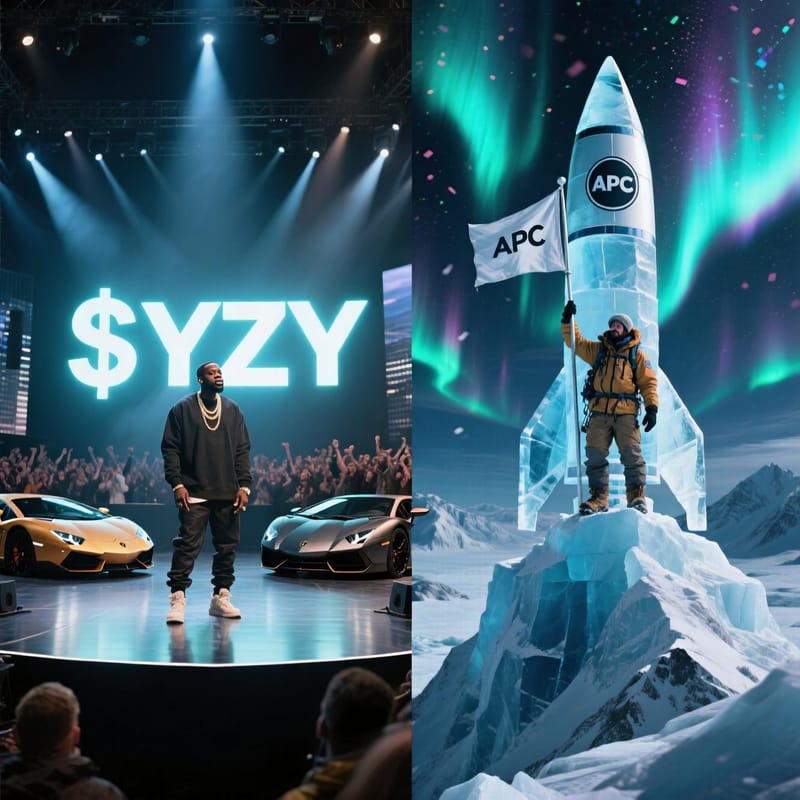Kanye West Launches YZY Token on Solana – A $3B Surge, Then Questions About Centralization and Fairness
Kanye West has officially entered crypto with the launch of YZY on Solana, briefly hitting a $3 billion market cap. But behind the hype, concerns are mounting over insider gains, 92% supply concentration, and whether this is empowerment—or another celebrity pump.

Kanye’s Crypto Debut: YZY Token Launches with Fanfare
Music icon and entrepreneur Kanye West has made his long-anticipated entry into the digital asset world with the launch of the YZY token on the Solana network. Announced via his social channels, the project positions itself as a movement toward financial sovereignty, under the banner of "YZY Money"—a decentralized alternative to traditional finance.
The ecosystem includes three core components:
- $YZY: The native Solana-based token
- Ye Pay: A proposed payment system
- YZY Card: A physical/digital card for spending YZY and USDC
Kanye framed the launch as a way to empower users outside centralized systems, tapping into the growing trend of artists and influencers leveraging blockchain for direct community monetization.
A $3B Hype Wave – Then a Reality Check
The market responded with explosive enthusiasm. YZY’s market cap surged from $200 million to $3 billion within hours of launch, making it one of the most talked-about memecoins of 2025.
But the rally quickly cooled, settling at $1.37 billion, as skepticism set in.
On-chain data from Lookonchain revealed troubling signs:
- One wallet made $1.5 million in profit minutes after launch, suggesting possible insider access
- 92% of the total supply is held by just a few addresses, raising red flags about centralization and manipulation risk
- 70% of tokens are allocated to Yeezy Investments LLC, with lock-up periods in place—but still, the concentration of power is extreme
This level of centralization contradicts the “decentralized empowerment” narrative and opens the door to potential liquidity pulls or coordinated dumps.
Tokenomics: Innovation or Obfuscation?
YZY introduces a unique mechanism to combat speculation: 25 contract addresses, with only one randomly selected as the official token post-launch. The idea is to prevent bots and early miners from gaming the system.
While creative, critics argue it adds unnecessary complexity and could be used to obscure the real token address—potentially aiding insider trading.
The total supply is capped at 1 billion tokens, distributed as:
- 20% – Public sale
- 10% – Liquidity
- 70% – Yeezy Investments LLC
This means the majority of value remains under Kanye’s control, at least in the short term.
Market Reaction: Hype, Leverage, and Fraud Warnings
Despite concerns, YZY is now live on major platforms, with some exchanges offering leveraged trading—a dangerous proposition for a token with such concentrated ownership.
Analysts warn that past performance is not indicative of future results, and the SEC could take interest if the token is deemed a security.
Additionally, fraudulent YZY tokens have already appeared on decentralized exchanges, mimicking the real project to scam unsuspecting fans—a common issue in celebrity-driven launches.
The Big Question: Empowerment or Exploitation?
Kanye’s entry into crypto was inevitable. But YZY’s launch raises critical questions:
- Is this true financial inclusion, or a wealth transfer from fans to insiders?
- Can a token with 92% supply concentration ever be “decentralized”?
- Will Ye Pay and the YZY Card ever materialize, or is this purely a speculative play?
While the initial buzz is undeniable, long-term viability remains highly questionable.





